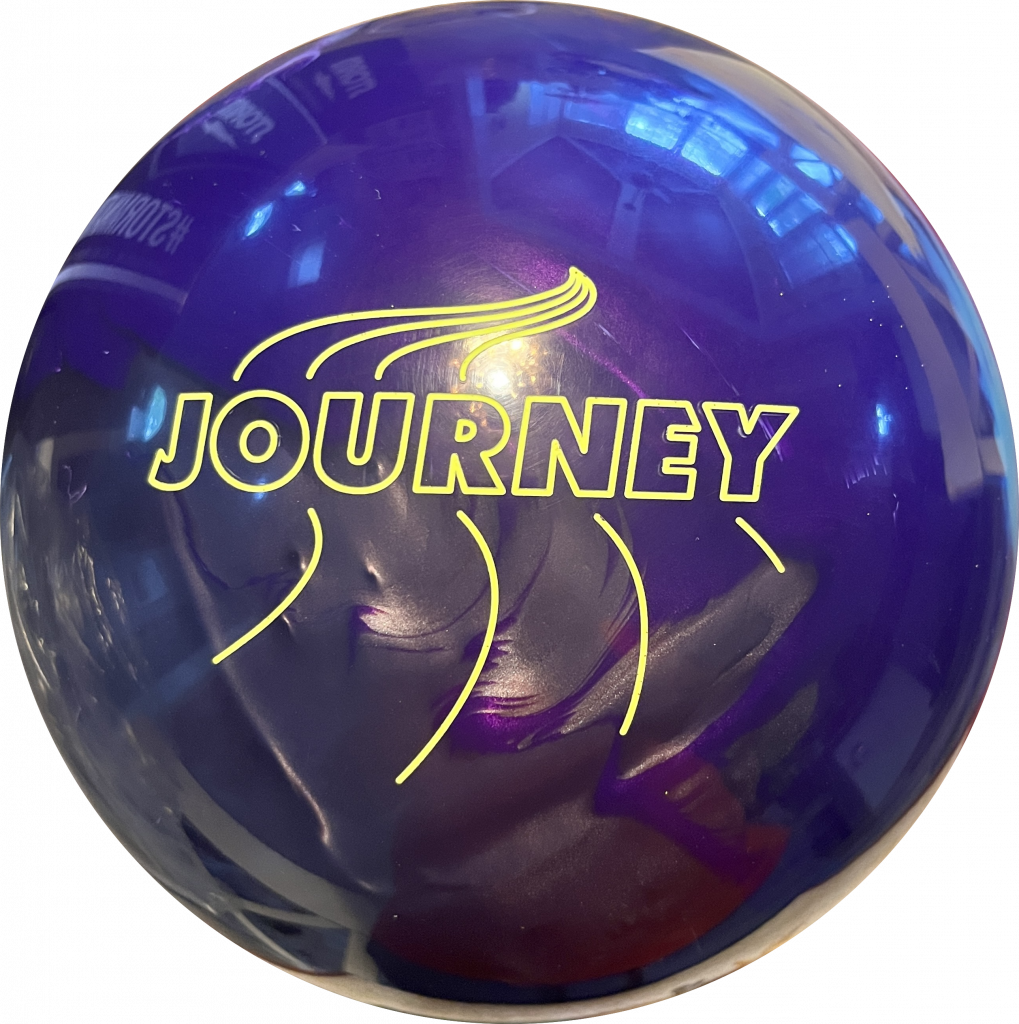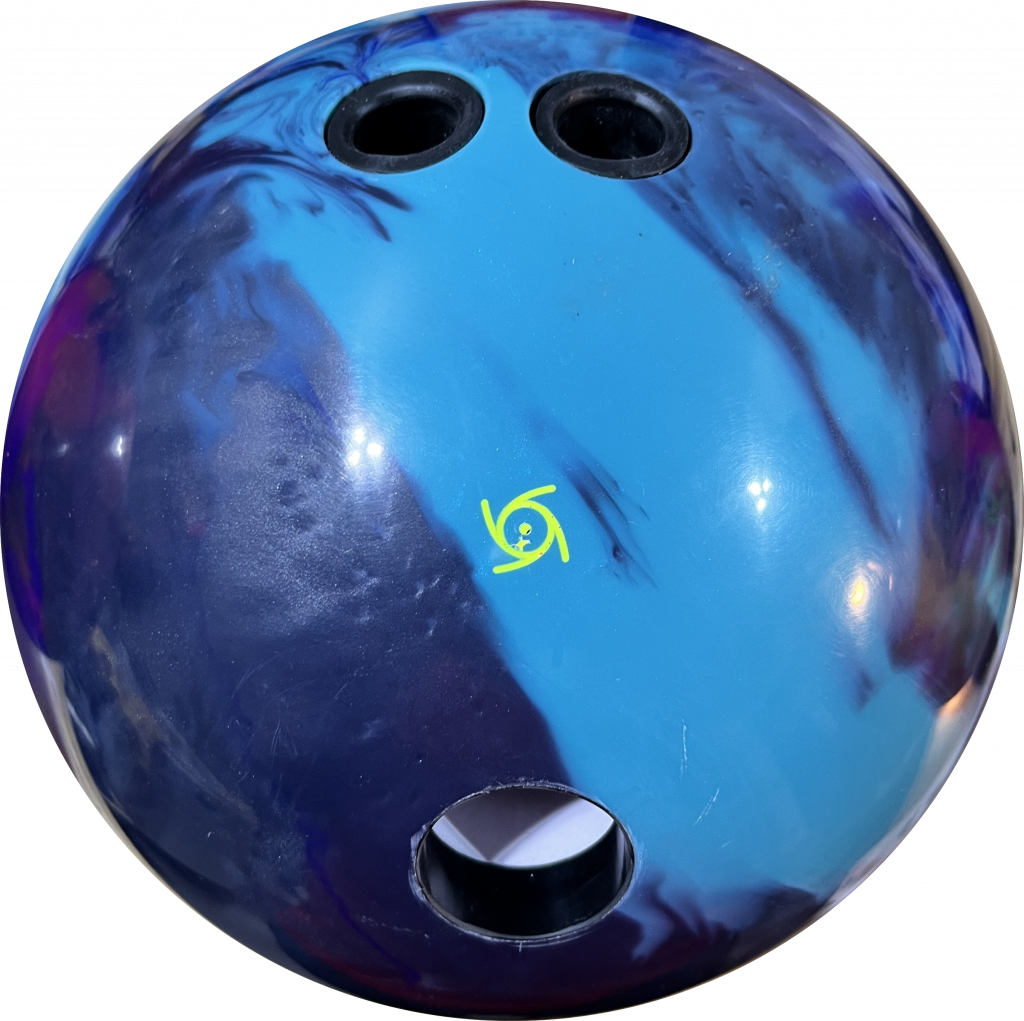

First Impressions
The Storm Journey feels like another Mid Late ball from Storm. I hate to sound unexcited but Storm really fills this category like crazy.
Check out our friends Jeff Miller and Ron Hoppe at Haley’s Pro Shop for world class drilling and coaching!
Tamer Elbaga (Lefty)
Style: Tweener
RPM: 330 rpm
PAP: 5 & 3/8 up
Average Speed: 18.5 mph (at release)
Axis tilt: low
Axis rotation: medium/high
Test Equipment: 14 Pounds
Layout: 50 x 5 x 45
Bryan Hoffman (Righty)
Style: Stroker
RPM: 280 rpm
PAP: 4 1/2 & 1 1/2 up
Average Speed: 18.5 mph (at release)
Axis tilt: high
Axis rotation: medium
Test Equipment: 14 Pounds
Layout: 50 x 5 x 45
Tyler Church (Righty)
Style: Power Player
RPM: 425 rpm
PAP: 5 1/2 & 1/2 up
Average Speed: 19 mph (at release)
Axis tilt: med
Axis rotation: medium
Test Equipment: 14 Pounds
Layout: 50 x 5 x 45
“Keep in mind that coverstock accounts for 70% of ball reaction, but the core creates the dynamic shape of the reaction. Your driller will alter the shape to suit your game.”
Pattern
THS: 42ft, 23ml
Sport: TBD
Specs
The Storm Journey uses the F-8 symmetric core inside the TX-16 Pearl Reactive coverstock.
15 pound = RG of 2.52 diff of .053
14 pound = RG of 2.54, diff of .052
Coverstock finish: Reactagloss
You should know by now that we always start off resurfacing every reactagloss finished ball to 1000 grit hard on spinner, followed by step 2 compound then light scuff by hand with 3000 abralon. Alright, so we threw this ball before we really knew anything about it. Didn’t see any write ups or even info on Storm’s website. So we got to test it without any preconceptions other than it’s a mixed blue shiny symmetric ball. With that said, let me just address the ball makeup first now that we know it. F-8 core is what was on the previous Belmo ball. That was used the ReX pearl. It was clean and quick transitioning. It’s what I called a fairly thin ball reaction meaning it almost looks like 2 phases even though of course we know there are 3. It goes from Skid to roll fairly quickly, meaning the hook phase feels very short. That is fairly typical of a mid late ball that you’d want to use as the lanes break down or you have lots of friction. The Journey now adds a new TX-16 in pearl version. TX-16 solid is what’s on the Phaze II. Phaze II people. So of course there’s a bit of marketing at play here. In the end though, the initial testing uncovers a pretty squarely Mid Late ball. Let’s say it is definitely less ball than the TNT Infused we tested but a bit more than the Fate. The Infused is more rolly in that you definitely see the middle Roll phase. The Fate was a bit more skid/flip. The Journey straddles the middle of those. As you would expect, it’s a little sensitive for a fresh shot or early in the block. It’s definitely more for when the lanes break down. I would love to say it would mimic the Phaze II look but on broken down lanes but I honestly can not say that for sure. I’d have to see it way longer to feel like it gives something more than any other Mid Late ball Storm has available. I feel like it’s encroaching on Revenant territory in the bag. I will say I did like the way this ball shaped from more direct, even though it was capable of opening up the lanes. If I can play it like a “control” ball even while being a more angular reaction, this could be something more special than I think but I need more time with it. I’d likely scuff a little harder with 3000 by hand to smooth it out more to use that way.
Next up is Tyler. You can watch the video to see the reaction. Pretty typical mid-late shape out of the Journey for him as well. It’s got the long and mostly late type of reaction. It is speed sensitive given how angular it can be. As is it can be a bit of feast or famine shape. It reminds me of the typical skid/flip shape that either destroys the pocket or leaves you a big split. Again, I think that’s why it’s better off on more breakdown where lane friction calms the break a bit and you get to take advantage of a more controlled angularity if that makes sense. This ball can definitely be manipulated by hand positions quite easily. That may be good or bad depending on the bowler. For average Joe’s, it might feel release sensitive and since we aren’t all that great at consistent releases could create some inconsistent ball reaction as well. For more advanced or pro bowlers, they’ll be able to manipulate the shot quite a bit as needed.
Bryan had a little bit of a different story and this is where you get to see the affect from different styles. As you would expect the ball is more arcy for him in general. I feel like the Journey is pretty typical mid late ball reaction for Bryan. What is that? Well it’s obviously clean. He can stay relatively close the friction but in a way he kind of has to. The reason is that if it’s too strong and he has to open up, Mid late balls don’t usually read the inside friction. So the ball kind of floats a bit. What we saw was there were a couple of shots that shot off the friction but he couldn’t really consistently reproduce that. He had to move a little away from the friction or move the breakpoint in to get the ball to the pocket. When he did, you did see the transition to roll but it didn’t really drive through the pins. He came in light a ton. However he struck a ton as well. So somehow even with the light hit that didn’t really drive, it seemed to impart enough energy to get the pins to fall over. This was interesting but most bowlers who saw a ball not driving through the pins would probably try something else rather than continue with that ball reaction. Luckily in testing you stick with it and it did keep striking.
All this said, the Journey is a pretty clear Mid-Late. I have to admit that tossing it and then finding out it’s TX-16 gives me some interest to try it a bit more to see if there is a possibility to get a cleaner Phaze II type reaction. Previously, the awesome Velocity core in other covers and I’m not sure they ever truly represented a “cleaner Phaze II” so I am intrigued to play with the Journey more to see if formulating the coverstock with TX-16 is the better way to finally get that.
Thanks for watching.

